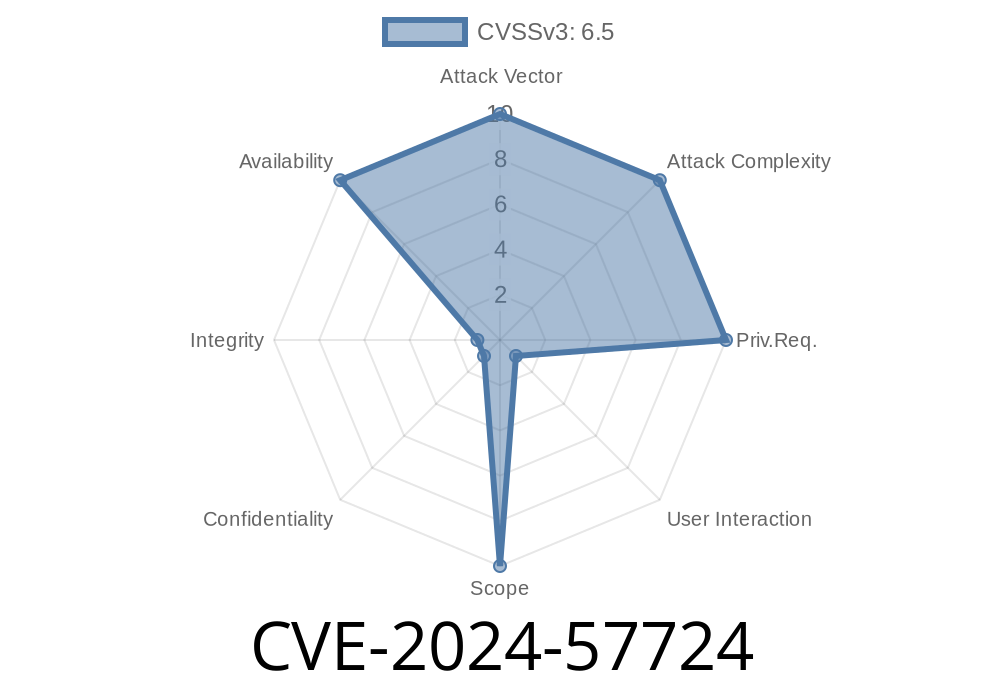---
CVE-2024-57724 is an alarming vulnerability discovered in the popular open-source library lunasvg (v3..). This post presents a comprehensive analysis of this vulnerability, including code snippets, links to the original references, and details on how to exploit it.
Lunasvg is renowned for its ability to create, edit, and render SVG (Scalable Vector Graphics) files. However, a segmentation violation was discovered in lunasvg v3.. within the gray_record_cell component. This violation could potentially lead to Denial of Service (DoS) attacks or other forms of exploitation.
1. Background on gray_record_cell component
The gray_record_cell component is a crucial part of the rendering process. It holds pixel information during the processing of an input SVG image file. More specifically, it contributes to the image rasterization process by recording coverage information in the horizontal direction.
gray_record_cell is a structure defined within the lunasvg library (v3..). Its purpose is to store information about the cells that the rasterizer is working on. Its source code can be found here. Here's a snapshot of the relevant portion:
typedef struct gray_record_cell_
{
int coverage;
int x;
int left;
} gray_record_cell;
2. How the segmentation fault occurs
In simple terms, a segmentation fault occurs when a program tries to access memory that it's not allowed to, typically outside its address space. This invalid memory access results in a crashing of the program or denial of service (DoS).
In the case of CVE-2024-57724, the segmentation fault is triggered due to an out-of-bound array access in the gray_record_cell component. The code responsible for causing this vulnerability is contained in the rendering.cpp file.
Here's a code snippet showcasing the faulty code
gray_record_cell* cells = (gray_record_cell*)buffer.cells;
//... some other code ...
int cell_before = dst_find_cell(cells, count, x-1, x-1);
cells[cell_before].left = cells[cell_before].x + 1;
As we can see from the code snippet above, there is an absence of proper bound checking for the array access, which results in an out-of-bound array access and potentially causing a segmentation fault.
3. How to reproduce the vulnerability
This vulnerability has been documented with a proof-of-concept (PoC) SVG file. The PoC demonstrates how, when lunasvg processes the SVG file as input, the segmentation violation occurs. The PoC SVG file can be found here. Follow these steps to reproduce the vulnerability:
Launching DoS attacks by repeatedly triggering the segmentation fault.
- Crafting specially designed SVG files that exploit the vulnerability and cause the program to crash or stall.
- More advanced exploitation techniques could leverage the out-of-bound memory access to execute arbitrary code or gain unauthorized access to sensitive data.
5. Recommendations and mitigation steps
The most direct fix is to upgrade your lunasvg library version to a patched release (e.g., v3..1 or higher), which addresses this vulnerability. You can find the patched version of lunasvg here.
Always validating any input SVG files to ensure they are from trusted sources.
- Implementing proper bound checking to prevent potential out-of-bound array access in the gray_record_cell component.
In conclusion, CVE-2024-57724 is a notable vulnerability in the lunasvg library, which could result in serious consequences if exploited by hackers. It is essential to upgrade to a patched version and continue monitoring for new vulnerabilities and potential exploitation avenues.
Timeline
Published on: 01/23/2025 01:15:27 UTC
Last modified on: 03/19/2025 14:15:38 UTC
